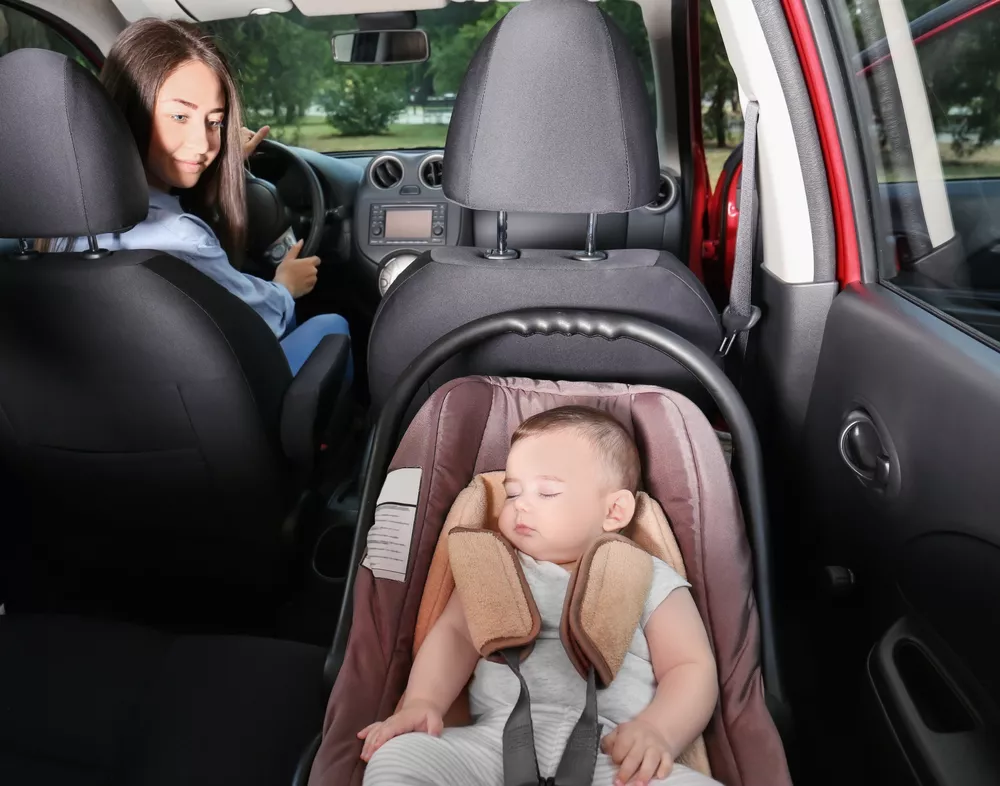Driving with a crying baby can be one of the most challenging experiences for parents. Whether you’re on a quick trip to the store or embarking on a longer journey, the sound of a distressed infant can be overwhelming. It’s essential to remain calm and focused, especially when navigating busy roads or dealing with traffic.
Knowing how to soothe your baby while maintaining safety is crucial. Managing a crying baby can feel even more daunting if you’re relocating and need to handle tasks like obtaining a driving license translation in Dubai. Here are some practical tips to help you through those challenging moments on the road.
Understanding Why Babies Cry in a Car?
Babies cry for many reasons, and understanding these can help you address their needs more effectively. Common causes include:
- Hunger
- Discomfort
- A Dirty Diaper
- Simply Wanting Attention
- Environmental factors such as temperature, noise, or even the sun’s brightness can contribute to a baby’s distress.
- Sometimes, the car’s motion might soothe a baby, but other times, it can cause pain, especially if they feel unwell or overtired.
- For parents who are in the process of relocating, dealing with tasks like getting a license in Dubai can add to the stress, making it even more challenging to address the baby’s needs promptly.
- Pay close attention to your baby’s cues. Different cries can signify different needs; for instance, a hungry cry might be more rhythmic and repetitive, while a discomfort cry can be more high-pitched.
By learning to identify these cues, you can respond more quickly and efficiently, making all the difference when driving.
Preparing for the Smooth Journey
Preparing for a drive with your baby requires foresight to ensure a smooth journey.
- Begin by packing a well-stocked diaper bag with essentials such as diapers, wipes, bottles, snacks, and a change of clothes.
- Ensure the car seat is installed correctly and comfortable for your baby, with no straps twisted or too tight.
- A sunshade can help protect your baby from harsh sunlight, making the ride more pleasant. Keep a few favorite toys or comfort items within reach to help keep your baby entertained.
- Timing your trip around your baby’s schedule can also make a significant difference. Plan drives during their naps, as the car’s motion can help them fall asleep.
- If you’re handling tasks like getting a driving license translation, try to complete these during your baby’s more relaxed periods to avoid unnecessary stress.
- Lastly, ensure your comfort and readiness by having water and snacks for yourself and setting up your GPS or route ahead of time.
This preparation can help minimize disruptions and relax you and your baby throughout the journey.
Balancing Parenting Responsibilities with Legal Obligations
Balancing parenting responsibilities with legal obligations can be particularly challenging, especially when dealing with tasks like legal translation. Whether addressing legal documents or obtaining a driving license, these tasks require focused attention and time, which can be hard to manage with a baby. To streamline the process, try to complete as much paperwork from a company who provide online services like 4M Translation.
As the top translation agency in Dubai, 4M Translation has built a solid reputation for excellence and productivity by offering precise and fast Legal Translation Dubai in more than 150 languages. We are the best option for all your translation needs in Dubai since we have a staff of qualified and experienced translators, state-of-the-art technology, and a dedication to client satisfaction.

When Your Baby Starts Crying in the Car: What to Do?
Driving with a crying baby can be one of the most stressful experiences for parents. The soothing sound of the road is often drowned out by wails and whimpers, leaving caregivers feeling helpless. So, how do you turn that car ride into a peaceful journey? Here are some effective strategies to help calm your little one while on the go.
1. Use Soothing Sounds and Music
Soft music or white noise can work wonders in calming a crying baby while driving. Create a playlist of gentle lullabies or soothing instrumental tracks before heading out. Some babies respond well to white noise, which can mimic the comforting sounds they hear in the womb.
There are many apps available that provide white noise options, from gentle rain to soft static. Adjust the volume to a gentle level to avoid startling your baby. Experiment with different sounds to see what calms your little one best during car rides.
2. Safe Stops and Breaks
When driving with a crying baby, planning for safe stops and breaks is crucial. Look for rest areas or parking lots where you can safely pull over to tend to your baby’s needs. Use this time to feed, change, or comfort your baby without the distraction of driving.
Regular breaks can also help prevent driver fatigue and relax you and your baby. If possible, schedule longer trips to include multiple stops, allowing your baby to stretch and get a change of scenery.
3. Engage Your Baby with Toys and Visuals
Keep a selection of your baby’s favorite toys and visual stimuli within easy reach to help keep them entertained during the drive. Soft, colorful toys that can be securely attached to the car seat are ideal. Mirrors designed for car seats can also engage your baby by allowing them to see themselves and their surroundings.
For older babies, consider attaching a toy bar or using a tablet holder with age-appropriate videos. Regularly switching out toys can also maintain your baby’s interest and provide a new distraction if they start to get fussy.
4. Staying Calm and Focused as a Driver
One of the most important aspects of driving with a crying baby is to stay calm and maintain your focus on the road. Practice deep breathing techniques to help manage your stress levels. If possible, listen to calming music or an audiobook to keep your nerves steady.
Make sure you are well-rested before embarking on your trip to avoid fatigue. Remember, a calm driver is essential for a safe journey, so take any necessary measures to keep your cool, such as planning breaks or adjusting your driving environment to reduce distractions.
5. Avoid Long Drives without Breaks
Long stretches of driving without breaks can lead to discomfort and restlessness for your baby. It’s essential to plan regular stops to check in on your little one, providing opportunities for feeding, diaper changes, or simply a change of scenery.

When Your Baby Starts Crying in the Car: What Not to Do?
Car rides with a crying baby can be challenging for any parent. Knowing what not to do in these moments can help ensure a safer and calmer journey for both you and your little one.
1. Don’t Ignore the Crying
Ignoring your baby’s cries can escalate their distress, leading to a more challenging situation. Acknowledging their discomfort is the first step toward understanding and addressing their needs, ensuring you and your baby have a more pleasant journey.
2. Avoid Sudden Stops or Erratic Driving
Panic can lead to sudden stops or erratic driving, which increases the risk of accidents. Maintaining a steady course helps ensure safety for everyone in the vehicle. Find a safe place to pull over and attend to your baby’s needs when necessary.
3. Don’t Overreact
Overreacting to a crying baby can add stress to an already tense situation. Keeping your emotions in check and remaining calm helps you handle the moment more effectively and reassures your baby that everything is okay.
4. Don’t Use Loud Noises or Aggressive Tactics
Using loud noises or harsh tones to quiet your baby can be counterproductive. Gentle, soothing voices and calming sounds are far more effective in helping your baby feel secure and comforted.
5. Don’t Rely Solely on Toys or Distractions
While toys and distractions can help, they shouldn’t be your only strategy for calming a crying baby. Check for other physical needs like hunger or discomfort; addressing the root cause will provide the best outcome.
6. Avoid Unsafe Practices
Safety should always come first when driving with a baby. Never unbuckle your child or remove them from their car seat while the vehicle is in motion. Keeping your baby secure is crucial for their safety and peace of mind.
Conclusion
Driving with a crying baby can be challenging, but understanding their needs and employing soothing techniques can make the journey easier. Trying to babies feel safe and comfortable in the car. By recognizing the causes of their cries and using calming methods like soft music or regular breaks, you can create a more peaceful environment.






